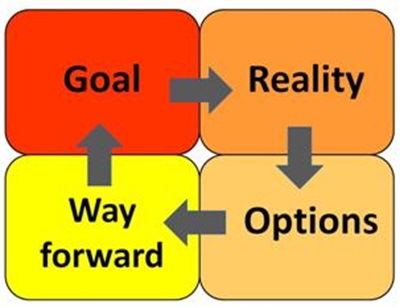A Coaching Power Tool Created by Patricia Hudak
(ADHD Coach, United States)
Our lives are not determined by what happens to us but by how we react to what happens, not by what life brings to us, but by the attitude we bring to life. A positive attitude causes a chain reaction of positive thoughts, events, and outcomes. It is a catalyst, a spark that creates extraordinary results. Anonymous
In the scientific community, a Catalyst is a substance that causes or accelerates a chemical reaction while an Inhibitor has the opposite affect: it delays, slows down, or prevents a reaction from occurring. Through introspection and self-awareness, we can find those unique things that serve as our catalysts to move forward and identify those inhibitors that get in the way of achieving desired change. Only then can we shift from a disempowering perspective to one that empowers us to create a foundation for a life that we deem is the absolute very best for ourselves.
Catalysts
One thing that never changes is change. It is constant. It is a part of life. Life is dynamic — and a dynamic life means an ever-changing life.
Newton’s First Law of Motion (commonly known as the “Law of Inertia”), states that an object at rest will stay at rest and an object in motion will continue to move at a constant speed in its original direction, unless acted upon by an external force or catalyst. This means there is a tendency for objects to keep on doing what they’re doing, resisting change in their state of motion.
 Self Application
Self Application
What does this mean if we apply Newton’s Law of Inertia to our lives? CAN we apply Newton’s Law to our lives? If we are sometimes “objects at rest”, we will stay at rest, yet how can that be if we live dynamic lives that, by definition, are constantly changing? Does the catalyst that facilitates a change in direction need to be an external force?
“Inertia” is defined as the resistance of any physical object to any change to its state of motion including its change to speed and direction.
If we are at rest, that does not mean we are not changing. It does mean, however, that the changes that are occurring could be happening “to us” rather than “with us”.
Therefore assuming first, that your life is always changing; second, that at times you are inert and resistant to the direction changes are headed; and third, YOU want to set your own course, how do you take control of your life to set it on the path that will make you feel the happiest and most fulfilled?
Inhibitors
Congratulations! You have moved from being in a resigned, complacent state to one of empowerment.
Self-awareness is the first step in creating what you want: identify your goals (desired outcomes or changes); define your current reality (including inhibitors that could hamper your ability to achieve your goals); examine your options (resources and catalysts) that are available to help you attain your new reality; and ascertain how you want to move forward (what you will do, your level of commitment, and your next steps).
 So, once you’ve decided what you want to change, what inhibitors are holding you back? How badly do you want to move forward? Are you confident that you can do it (because you can!), or is self-doubt gnawing at you? What resources are available for you to draw from: friends? family? coach? Now that you’ve acknowledged your support team, what lies inside YOU that will serve as a catalyst during your journey toward self-growth?
So, once you’ve decided what you want to change, what inhibitors are holding you back? How badly do you want to move forward? Are you confident that you can do it (because you can!), or is self-doubt gnawing at you? What resources are available for you to draw from: friends? family? coach? Now that you’ve acknowledged your support team, what lies inside YOU that will serve as a catalyst during your journey toward self-growth?
Coaching Application
Accepting the fact that change is constant and that many changes to our lives are out of our control, what is the role of the coach in helping clients take the initiative to design their own movement forward?
Catalyst is the Client
We may meet a client whose life is moving in slow motion: day-to-day life is routine, nothing extraordinary, and the client is feeling unsettled, not wanting to accept that this is all there is.
The subtle changes taking place in the client’s life go unnoticed or are irrelevant. By wanting more and seeking guidance from a coach, the client is the catalyst that initiates significant, meaningful changes to his or her life.
A catalyst is about movement and change. It is about “sparks”. As coaches, we can create a safe space where the client can use these sparks to:
Catalyst is an Event
Painful as it may be, a significant emotional event can be the catalyst for choosing a direction that serves us – and those around us – more effectively. Look for the learning. Louisa May Alcott
When meeting a client who has recently experienced a loss (e.g., fired from a job), coaches can help the client acknowledge that “bad things happen”. Negative events can be used as opportunities for growth – for change. Coaches can also work with the client to explore ways to leverage the consequences of the event to shift perspective to something that will give rise to a positive outcome.
Reflection
- As a coach, are you a catalyst?
- Are attitudes and beliefs catalysts for change?
- Can the client be his or her biggest inhibitor to change?
- What structures can you put in place to help clients identify catalysts and overcome inhibitors?